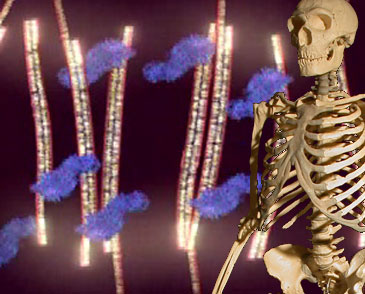DNA amplified from Neandertal bones

An image representing DNA amplified from Neandertal bones.
image representing DNA amplified from Neandertal bones.
dna,evolution
- ID: 15603
- Source: DNALC.DNAi
Related Content
15604. Human Neandertal mtDNA tree
Human Neandertal mtDNA tree.
15980. Accumulating mutations
Mutations are the grist of evolution, and have accumulated in our DNA over time. When populations separate, each group accumulates their own unique set of DNA mutations.
15617. DNA nucleotide mutation
A single DNA nucleotide undergoes a "point" mutation, changing an A to a T.
16461. Video 20: Matthew Meselson, clip 2
The three models of DNA replication - semi-conservative, conservative, and dispersive - and whether bias played a role in designing/interpreting the experiment.
15608. Human/Neandertal/Chimp mutation evoluton tree
Mutations in our DNA can be used to trace the relationships between different populations and species.
16462. Video 20: Matthew Meselson, clip 3
How Meselson came to read the Watson and Crick paper, then think about ways to experimentally test how DNA replicates.
16580. Video 26: Raymond Gesteland, clip 2
Why DNA was probably not the driving force of molecular evolution in a pre-biotic environment.
16587. Concept 27: Mutations are changes in genetic information.
Some mutations are starting points for evolution, others are responsible for disease.
15619. Human / Chimp mtDNA tree comparison
Comparison of genetic diversity in humans and chimpanzees, using sequences from 811 humans and 332 chimps.
15457. Repetitve elements, junk DNA, transposons, and compartative genomics, James Watson
James Watson talks abput repetitve elements, junk DNA, transposons, and compartative genomics.












